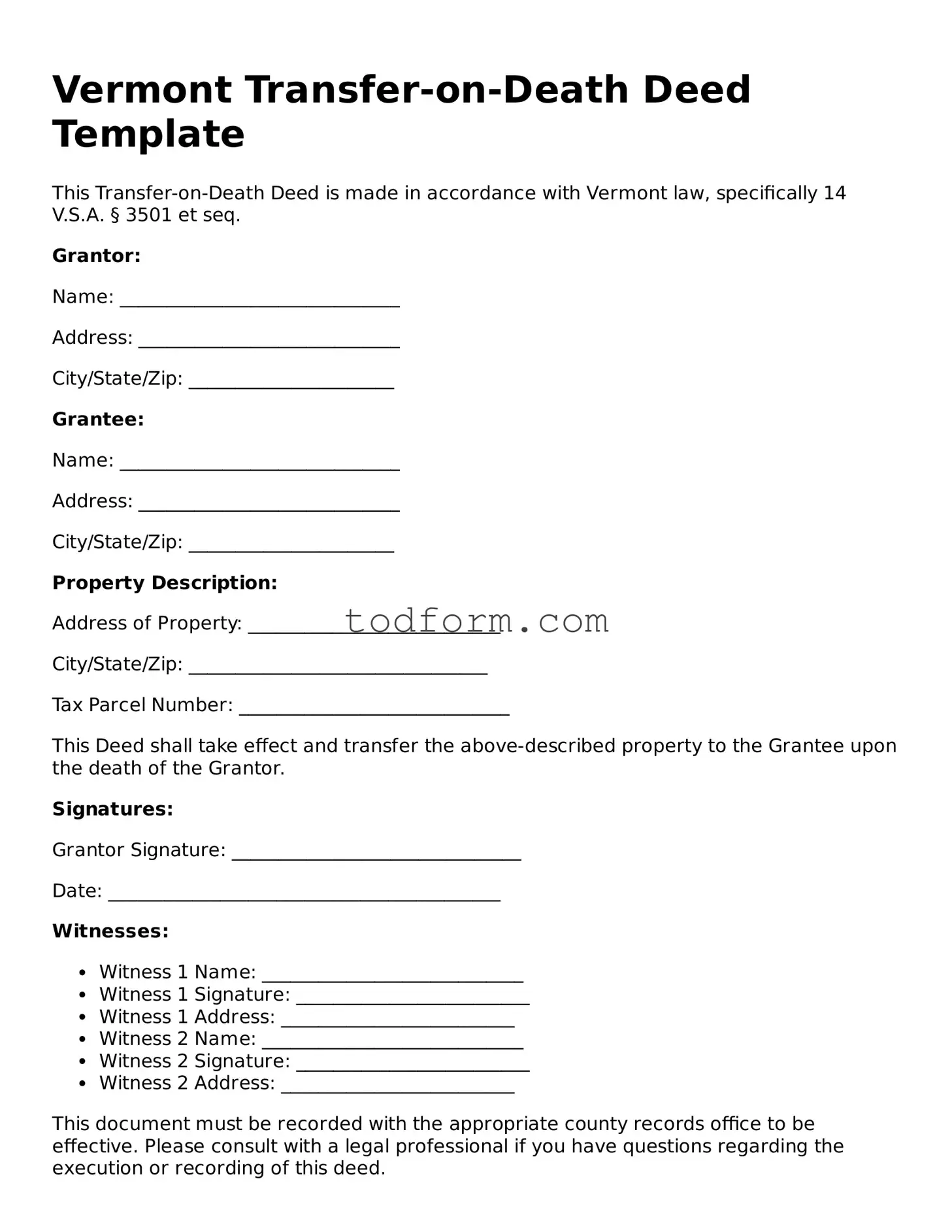The Vermont Transfer-on-Death Deed (TOD) form shares similarities with a Last Will and Testament. Both documents allow individuals to express their wishes regarding the distribution of their property after death. However, while a will goes into effect only after probate—meaning it must be validated in court—a TOD deed allows property to transfer directly to beneficiaries without going through this often lengthy and costly process. This feature makes the TOD deed an appealing option for those seeking a simpler transfer of assets upon their passing.
Another document akin to the TOD deed is a Living Trust. Like the TOD deed, a living trust facilitates the transfer of assets outside of probate. A living trust is created during a person's lifetime and can manage assets while the individual is alive, as well as after their death. However, it requires more formalities to set up and maintain compared to a TOD deed. The living trust can also be more comprehensive, covering a wider range of assets and providing ongoing management, while the TOD deed is limited to real estate.
Power of Attorney (POA) documents are also similar in that they allow individuals to designate someone to act on their behalf. However, a POA is typically used for managing financial or health-related decisions while the person is still alive, rather than transferring property after death. While a TOD deed is focused solely on asset distribution upon death, a POA can be a crucial tool for handling affairs during a person’s lifetime, showcasing the differences in timing and purpose between the two.
Joint Tenancy with Right of Survivorship (JTWROS) is another relevant document. This form of property ownership allows two or more people to hold title to property together. Upon the death of one owner, the surviving owner(s) automatically inherit the deceased's share without going through probate, similar to how a TOD deed operates. However, JTWROS requires both parties to have an ongoing relationship, whereas a TOD deed can designate any beneficiary, regardless of their relationship to the property owner.
Beneficiary Designation forms, commonly used for financial accounts like life insurance policies or retirement accounts, also resemble the TOD deed. These forms allow individuals to name beneficiaries who will receive the funds directly upon their death, bypassing probate. While the TOD deed specifically pertains to real estate, beneficiary designations serve a similar purpose for financial assets, ensuring a smooth transfer to designated individuals without court involvement.
Lastly, a Quitclaim Deed can be compared to the TOD deed, though it serves a different function. A quitclaim deed is used to transfer ownership of property without guaranteeing that the title is clear. It can be executed during a person's lifetime to transfer property to another individual, but it does not provide the same posthumous transfer benefits as a TOD deed. The TOD deed ensures that the property automatically passes to the named beneficiary upon death, whereas a quitclaim deed may create ambiguity regarding ownership if not executed properly.
